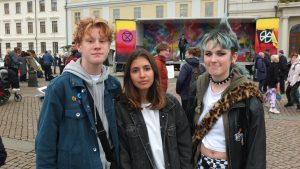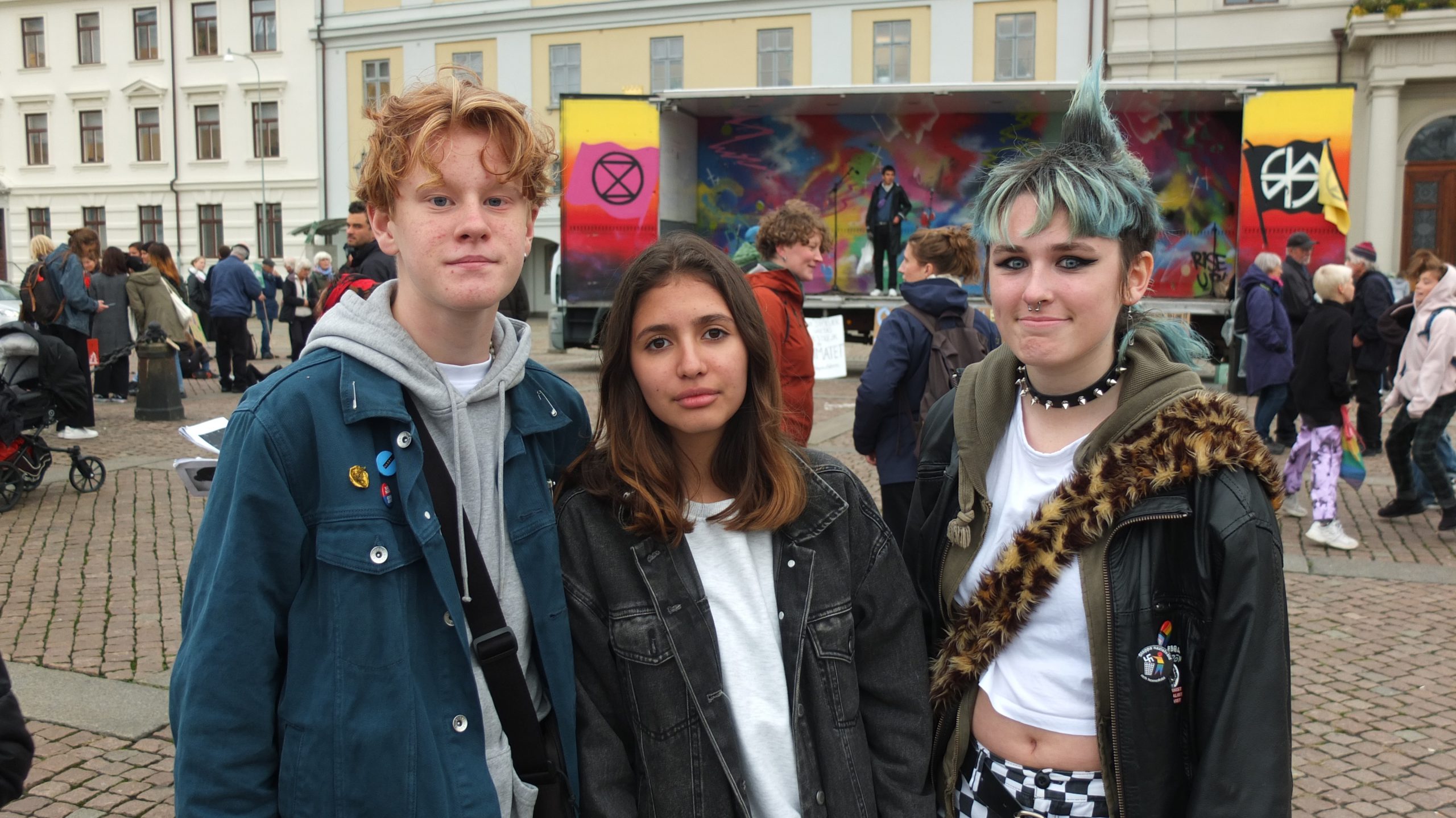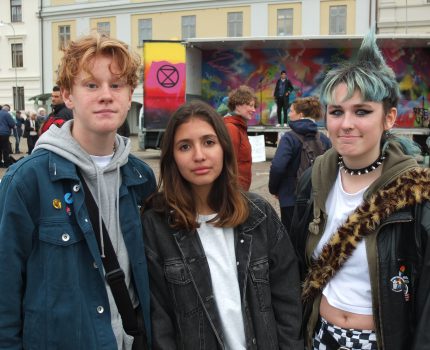This past Friday, the 24th of September, the Fridays For Future climate movement held its first global day of action since the start of the COVID pandemic. Using the hashtag #uprootthesystem, protestors took both to the streets and to online spaces to demand intersectional climate justice. Two of our bloggers, Samuel and Kasia, attended in-person local actions in Gothenburg and New York, respectively, and we are dedicating this post to an interactive discussion about their experience, looking at Fridays for Future (FFF) and their activism within the context of digital media and development. Check out our video podcast for the full discussion:
A little bit of background on Fridays For Future – the group is “a youth-led and -organised movement that began in August 2018, after 15-year-old Greta Thunberg and other young activists sat in front of the Swedish parliament every school day for three weeks, to protest against the lack of action on the climate crisis.” Many of us have seen those powerful images of Greta sitting outside parliament in the early days, as well as more recent images of her departing by sailboat across the Atlantic Ocean to address World Leaders at the UN General Assembly. Greta Thunberg is arguably the most visible climate activist of our time and she’s become a powerful leader, engaging youth in the charge against climate change and building a strong global movement.
Some of the most interesting and salient points coming out of our discussion:
- The actions appeared to have less in-person participants than in past actions, and the atmosphere among the protestors was more of frustration at the lack of progress and tangible change since the start of the movement in 2018.
- At the same time, we should consider whether the success of FFF’s action should actually be measured by sheer number of participants (though it is important to note there was still some 800,000 participants worldwide) and whether lower participation levels could also be an indication of people’s reticence to join large group meetings in light of the COVID pandemic.
- FFF has been able to maintain consistent, yet localized, messaging that builds off of their stated aim of intersectional climate justice, but also addresses immediate concerns in the specific location where the protest was held.
- Though it is a youth-led movement, our bloggers noted that there were a variety of ages represented – teenages, parents with young children, older adults – which speaks to FFF’s ability to mobilize support across a variety of demographics.
- While participants were actively documenting and sharing content on the protests via social media, and organizers employed new digital tools (for example, crowdfunding platforms to support activists), the events relied on more traditional protest communication methods – cardboard signs, songs, chanting, etc. – and many of the young protestors with whom our bloggers spoke were adamant about the importance of showing up and participating in person.
- FFF also arranged a digital global strike for this activation which attracted around 60 participants from various countries and gave them an opportunity to connect and to discuss issues like mental health in small groups.
While attending the protest in Gothenburg our blogger Sam spoke to some participants, asking, “what do you think is more effective, online or onsite activism?” Below are some of the responses:

“Online you can reach a lot of people, but I think you need to meet people in person to make them really care about something. When you meet in person and it’s like a big group of people it’s more powerful than online because you can really see all the people that stand for these things.”.

“I think online and onsite activism work together in creating movements, so you need to use both. Both have really good tactics by themselves, but with the Corona crisis we’ve had to move online and find spaces where we can talk about the crisis we face and connect to organizations to work against capitalism and create a vision of the world we want to live in. Online you can easily despair because you’re not connecting with people in real life, so it’s important to actually turn up and meet people in the flesh.”
Did you attend the global action last Friday? What was your experience and what are your thoughts on the questions we discussed? Let us know in the comments below!

